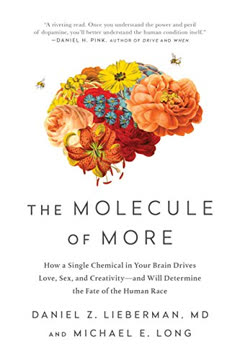Key Takeaways
1. Wildhood: The Universal Adolescent Journey Across Species
Although it happens at any point from a few days to many years after they’re born, all animals have a “teenage” period.
A shared phase. The transition from juvenile dependence to mature adulthood is a distinct and necessary phase experienced by all animals, not just humans. This period, termed "wildhood," involves significant physical and behavioral changes as individuals grow in size but lack adult experience. It's a time of vulnerability, excitement, danger, and possibility shared by creatures from fruit flies to whales.
Beyond human exceptionalism. Claims of human uniqueness in experiencing adolescence are incorrect. Wild animals also navigate risk-taking, intense socialization, sexual experimentation, and the challenge of leaving home. Recognizing this shared journey across millions of years of evolution reveals the deep animal roots of human development and behavior.
A planet-wide tribe. Adolescents across species share a "horizontal identity," having more in common with their peers from different families or species than with their own parents or younger siblings. They are temporary members of a global tribe, facing universal core challenges essential for successful maturation.
2. Safety First: Learning to Survive by Facing Danger
To become safe you must take risks.
Predator naive. Young animals leaving parental protection for the first time are "predator naive," lacking the experience to recognize and respond to dangers. This inexperience makes them easy prey, facing higher rates of death from predators, accidents, and exploitation compared to adults. Human adolescents also face increased risks from accidents, violence, and risky behaviors.
Internal and external armor. Animals develop defenses against threats, both physical (like camouflage or claws) and behavioral ("mechanisms of defense"). Fear is an ancient, life-saving reflex that triggers responses like startling, freezing, or fleeing, helping animals learn to avoid danger through "fear-conditioning." However, excessive fear or "island tameness" (loss of fear in safe environments) can also be detrimental.
Knowing your predators. Predators assess prey based on a cost-benefit analysis, often targeting inexperienced adolescents who are easier to catch. Prey animals learn to avoid detection and signal their unprofitability (e.g., stotting, alarm calls) to deter attacks. Surviving encounters with danger, even near misses, is crucial for developing the "predator aware" skills needed for adult survival.
3. Status Wars: Navigating Hierarchies Is Key to Well-being
Status is like gravity.
An age of assessment. Wildhood is a critical period for learning and solidifying one's place within social hierarchies. Animals, like humans, assess each other based on factors such as:
- Size and age
- Physical condition and attractiveness (often linked to grooming)
- Sex
- Social connections and family ties
The power of rank. An individual's rank profoundly influences access to vital resources like food, territory, mates, and safety. Higher-ranking animals enjoy privileges, while lower-ranking individuals face greater stress, poorer health, and increased vulnerability. Understanding and navigating these social structures is fundamental for survival and well-being in social species.
Social brain network. Specialized brain systems, collectively called the Social Brain Network (SBN), help animals perceive, process, and respond to social cues and hierarchy dynamics. This network is particularly active during adolescence, making young individuals highly sensitive to social acceptance and rejection. Changes in status trigger neurochemical responses that influence mood, linking social position to feelings of pleasure or pain.
4. Privilege & Adversity: How Birthright and Environment Shape Status
Level playing fields don’t exist in nature.
Inherited advantages. Status is not solely determined by individual merit or physical prowess; it is often inherited. "Maternal rank inheritance" ensures that offspring of high-ranking mothers receive elevated status and associated privileges as a birthright. These advantages include better nutrition, faster growth, stronger immune systems, and access to established social networks.
Maternal intervention. High-ranking mothers actively intervene to help their offspring win contests and secure their position in the hierarchy. They train their young to assert dominance and leverage their own social connections to support their children's rise. This parental support helps young animals avoid the "loser effect," where early defeats lead to a pattern of continued losing.
Environment matters. Beyond parentage, the environment significantly shapes an animal's destiny. Resource-rich environments can buffer the disadvantages of low birth rank, while harsh conditions exacerbate them. Adversity during wildhood, however, can sometimes foster resilience, innovation, and behavioral flexibility, potentially enabling lower-ranking individuals to thrive if they can find or create new opportunities.
5. Love Language: Courtship Is Learned, Not Just Instinctive
sex is easy. Romance is hard.
Beyond puberty. While puberty brings physical reproductive capability, behavioral and emotional maturity for mating takes time and experience. Many wild animals delay breeding for months or years after becoming physically mature, using this period for social and romantic education. This delay allows them to develop the skills needed to be successful partners and parents.
The art of courtship. Courtship is a complex, learned process of expressing and reading desire, balancing excitement and inhibition. It involves species-specific rituals using visual, auditory, olfactory, and tactile signals. Examples include:
- Humpback whales singing complex songs
- Milu deer adorning antlers with vegetation
- Bowerbirds building elaborate nests
- Fruit flies performing intricate dances
Learning from elders. Young animals learn courtship behaviors by observing and practicing with older, more experienced individuals. This social learning is crucial for mastering the nuanced communication required to attract mates and navigate sexual interactions successfully.
6. Consent & Coercion: Sexual Communication Exists in the Wild
There is literally a two-way fly conversation about sex.
Dialogue of desire. Courtship is fundamentally a two-way conversation about sex, where individuals signal interest and receptivity and assess the same in potential partners. This back-and-forth communication, governed by brain systems regulating excitation and inhibition, is the basis of sexual agreement in animals. Even simple organisms like fruit flies engage in this dialogue.
Coercion in nature. While much animal sexual activity involves mutual signaling, sexual coercion does occur across species. It can take different forms:
- Use of physical force
- Harassment to wear down resistance
- Intimidation and threat of violence
Beyond physical force. Just as in humans, animal sexual coercion is not limited to physical restraint. Harassment and intimidation can compel an unwilling partner to submit, making encounters that appear non-coercive to an uninformed observer actually coercive. Recognizing the widespread nature of sexual communication and the existence of coercion in animals highlights the importance of consent in human interactions.
7. Making a Living: Self-Reliance Is a Core Adult Skill
Being able to procure your own food is one of the most important markers of animal adulthood.
The challenge of eating. Finding and obtaining food is a complex, energy-intensive task for wild animals, requiring learned skills in hunting, foraging, or grazing. Starvation is a major risk during wildhood, often exceeding the danger of predation, as inexperienced young animals struggle to feed themselves. Hunger drives vulnerable individuals to take greater risks.
Learning to eat. Animals are not born with perfect food-finding skills. Parents and the community play vital roles in teaching young animals what and how to eat. This training can involve:
- Parents bringing injured prey for practice
- Mentors guiding foraging excursions
- Observing peers' food choices
Grit and opportunity. Persistence and tenacity ("grit") are crucial for young animals to overcome the challenges of finding food, especially for lower-status individuals with fewer resources. While individual effort is important, access to resources and opportunities, often provided through parental support or a favorable environment, significantly impacts a young animal's ability to become self-reliant.
8. The Great Alone: Dispersal Is Dangerous but Necessary
Dispersal—often referred to as “leaving the nest”—forces characters to face fear, form friendships, find love.
The launch. Dispersal is the process by which adolescent animals leave their birth territory to live independently, taking on responsibility for their own safety, social life, and food. This moment, whether abrupt or gradual, is one of the most dangerous times in an animal's life, exposing them to novel environments, predators, and the risk of starvation.
Informed vs. uninformed. Some animals experience "uninformed" dispersal, leaving without prior training or experience (like penguins plunging into the ocean). Others have "informed" dispersal, receiving pre-departure coaching from parents, including practice hunts or scouting trips. Practice dispersals, like sleepaway training in possums or hunting school in wolves, improve a young animal's chances of survival.
Delayed departure. Some adolescents delay dispersal, staying in the home territory longer to gain skills, avoid danger, or wait for better opportunities. This "delayed dispersal" can offer benefits like increased survival, better physical condition, and opportunities to inherit territory or act as "nest helpers" for younger siblings. However, it also postpones the development of independent foraging and antipredator skills.
9. The Power of Support: Peers and Parents Shape Success
The power of a friend is incredible.
Beyond independence. While self-reliance is key, successful wildhood often involves continued support from parents and peers. "Extended parental care" provides resources, protection, and guidance to young adults even after they leave home, improving their survival and future success. This support is common across species, especially in dangerous or resource-scarce environments.
Peer influence. Social learning from peers is a powerful educational tool during wildhood. Adolescents learn crucial life skills by observing their peers' successes and failures, including:
- Antipredator behaviors (e.g., mobbing)
- Social navigation and conflict resolution (through play-fighting)
- Courtship communication
- Food choices and foraging techniques
Allies and coalitions. Forming friendships and alliances is vital for navigating social hierarchies and increasing safety. Animals, like humans, benefit from the presence of allies who provide support, protection, and opportunities for social practice. Isolation, conversely, can be detrimental, increasing vulnerability and potentially leading to psychological distress.
10. Bioinspiration: Animal Wildhood Offers Lessons for Humans
Turning to nature to find solutions to the challenges of human life is an emerging field called “bioinspiration.”
Shared challenges. The fundamental challenges of wildhood—staying safe, navigating status, communicating sexually, and becoming self-reliant—are universal across species. By studying how animals have evolved to face these challenges over millions of years, we can gain valuable insights into human adolescent development and well-being.
Lessons from the wild. Animal wildhood offers bioinspired approaches for guiding human adolescents:
- Encourage facing manageable risks to build resilience.
- Recognize the deep roots of status concerns and the impact of privilege.
- Emphasize learning communication and consent in sexual relationships.
- Foster self-reliance through practical skill-building and opportunities to contribute.
- Understand the importance of peer connections and parental support.
Beyond the individual. The concept of wildhood extends metaphorically to any human endeavor transitioning from a nascent stage to maturity (businesses, careers, relationships). Understanding the universal patterns of growth, challenge, and adaptation seen in animal wildhood can provide a roadmap for navigating these transitions successfully in human life.
Last updated:
Review Summary
Wildhood explores adolescence across species, drawing parallels between human and animal development. Readers found the book fascinating, insightful, and well-researched, praising its unique perspective on the challenges faced during the transition to adulthood. Many appreciated the book's organization around four key areas: safety, status, sex, and self-reliance. While some felt certain sections could have been more in-depth, overall the book was highly recommended for parents, educators, and anyone interested in biology or animal behavior. The accessible writing style and engaging animal examples made complex concepts relatable and thought-provoking.
Similar Books








Download PDF
Download EPUB
.epub digital book format is ideal for reading ebooks on phones, tablets, and e-readers.




